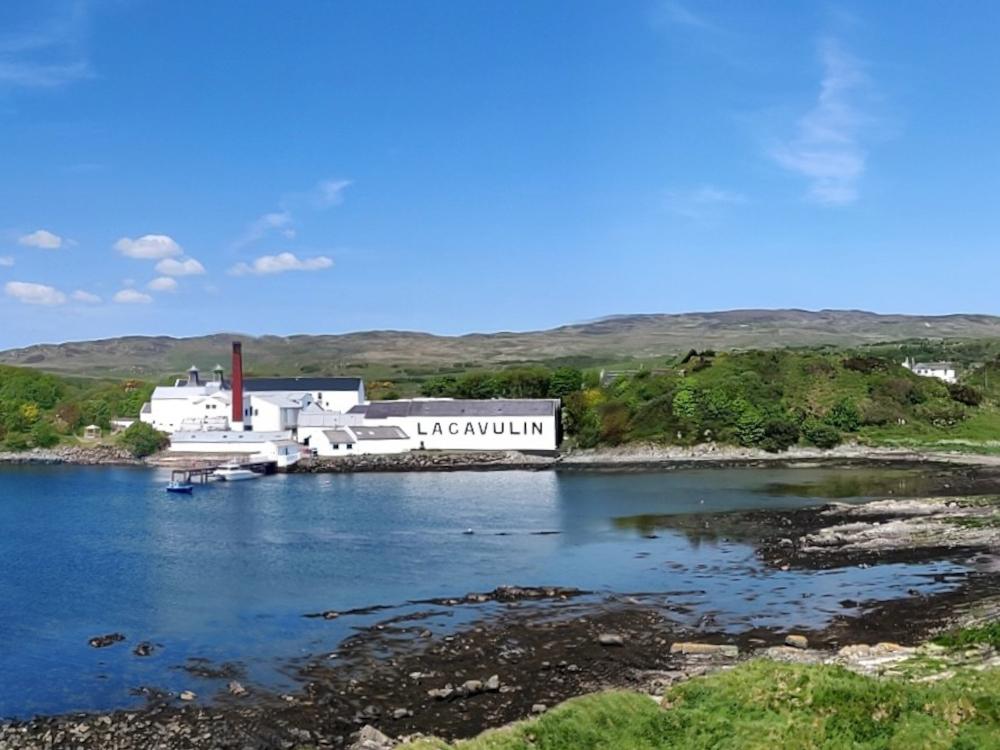Phenols
Published September 14, 2023
Contents

What are phenols?
Phenols are chemical compounds that are of great importance for flavoring and flavor enhancement in the whisky industry, more commonly known as peat. Phenols are given on a technical scale in parts per million (PPM). This is a millionth unit that is also used in technical devices such as smoke extraction systems to check the air quality.
These substances are important flavor carriers in the whisky industry, in particular distilleries from the Island of Islay and the Scottish Highlands known for their intense smoke note.
How many PPM do Scottish distilleries peat their whisky to?
Typical phenol values from Scottish malt whisky distilleries vary from around 2 PPM all the way up to Octomore 08.3 peated to 309.1 PPM. In general a range of 35-55 is more common. You can find the PPM for some of the more common Scotch whisky distilleries below:
| Distillery | Phenols |
|---|---|
| Bunnahabhain | 2 PPM |
| Glenfarclas | 3 PPM |
| Bruichladdich | 3 PPM |
| Springbank | 8 PPM |
| Benromach | 8 PPM |
| Bowmore | 20 PPM |
| Highland Park | 20 PPM |
| Talisker | 25 PPM |
| Ledaig (Tobermory) | 35 PPM |
| Lagavulin | 40 PPM |
| Port Charlotte (Bruichladdich) | 40 PPM |
| Laphroaig | 40 PPM |
| Ardbeg | 50 PPM |
| Longrow (Springbank) | 55 PPM |
The PPM values may also differ inside a distillery depending on the product category of a whisky. For example Bruichladdich offer three product types: Bruichladdich - Unpeated Bruichladdich - Port Charlotte (40 PPM) Bruichladdich - Ocotomore (up to 309.1 PPM)
Irish peated whiskies
A number of Irish whiskies are also distilled using peated barley, The Connemara for example clocks in at milder 13 to 14 ppm whereas Waterford Distillery’s Peated: Lacken and Peated: Woodbrook are the most heavily-peated Irish whiskies of all time coming in at rate of 57ppm and 74ppm respectively.
Still shape and speed of distillation impact peat
Phenols are big molecules with a high boiling-point which are only released as vapour towards the end of the distillation cycle. Their capture will therefore depend on the cut points set by the distiller and go someway to explain why similarly peated spirits such as Lagavulin, Laphroaig and Caol Ila all end up tasting so uniquely different.
The big PPM lie
Around 2010 some distilleries discovered the superlative power of the peat factor. The PPM number introduced a measured value into the scene that was previously only relevant for malting plants and distilleries.
The PPM value used to measure the concentration of smoky molecules on the malt is a somewhat disingenuous yardstick as the concentration of smoky molecules that end up in the whisky is always a factor lower than that which was on the malt. Take the Ardbeg and Lagavulin distilleries, for example. The content of the former ranges around 50 PPM, but their new make has only 24 to 26 PPM. With Lagavulin it comes in at 40 PPM the final produce can end up far lower around 16 PPM in the spirit.
There’s obviously nothing wrong with promoting heavily peated whiskies but to talk of the malt PPM is perhaps a little misleading as this level is reduced by the subsequent cask maturation. The same spirit will have a high PPM at 3 years old, a lower one on it’s 10 birthday and by 18 or 25 the whisky may have virtually no recogniseable smoke.
FAQs
How much of the phenols will be lost after the whisky making process?
Anywhere betweern 40 to 80% of the phenolic content of the barley that arrives at the distillery is lost during the production phase alone. The exact rate is dependandt on a number of considerations including the size and shape of the stills used for distillations
What is the ppm of single malt whisky?
Phenolic PPM can range from as low as 3 to as high as 309.1 PPM. Whiskies are generally classified as either Lightly Peated at 10PPM or less, Medium Peated: coming in around 25 PPM or Heavily Peated if they come in at over 50 PPM
What is the highest ppm whisky in the world?
Bruichladdich's Octomore 8.3, is the most heavily peated whisky ever recorded at an eye watering 309.1. However it's important to note that as for the rest of the industry this is a measure of the PPM on the malted barley rather than the contents in the glass.
What is the most heavily peated Irish whsky?
Bottled at a rate of 74 PPM , the Waterford Distillery’s Peated:Woodbrook expressions is most heavily-peated Irish whiskeys to be produced thus far.
What is the most heavily peated Japanese whsky?
The Hakushu Heavily Peated is the most heavily peated Japanese whisky. However coming in at a breezy 25ppm the name might be slightly misleading by Scottish standards
What is the most heavily peated Indian whsky?
Paul John Bold is the most heavily peated Indian whisky. The malt is Indian barley peated to 25 ppm with Islay peat, double-distilled in a set of Indian-made copper pot stills that were designed to emulate the traditional Scottish method.

